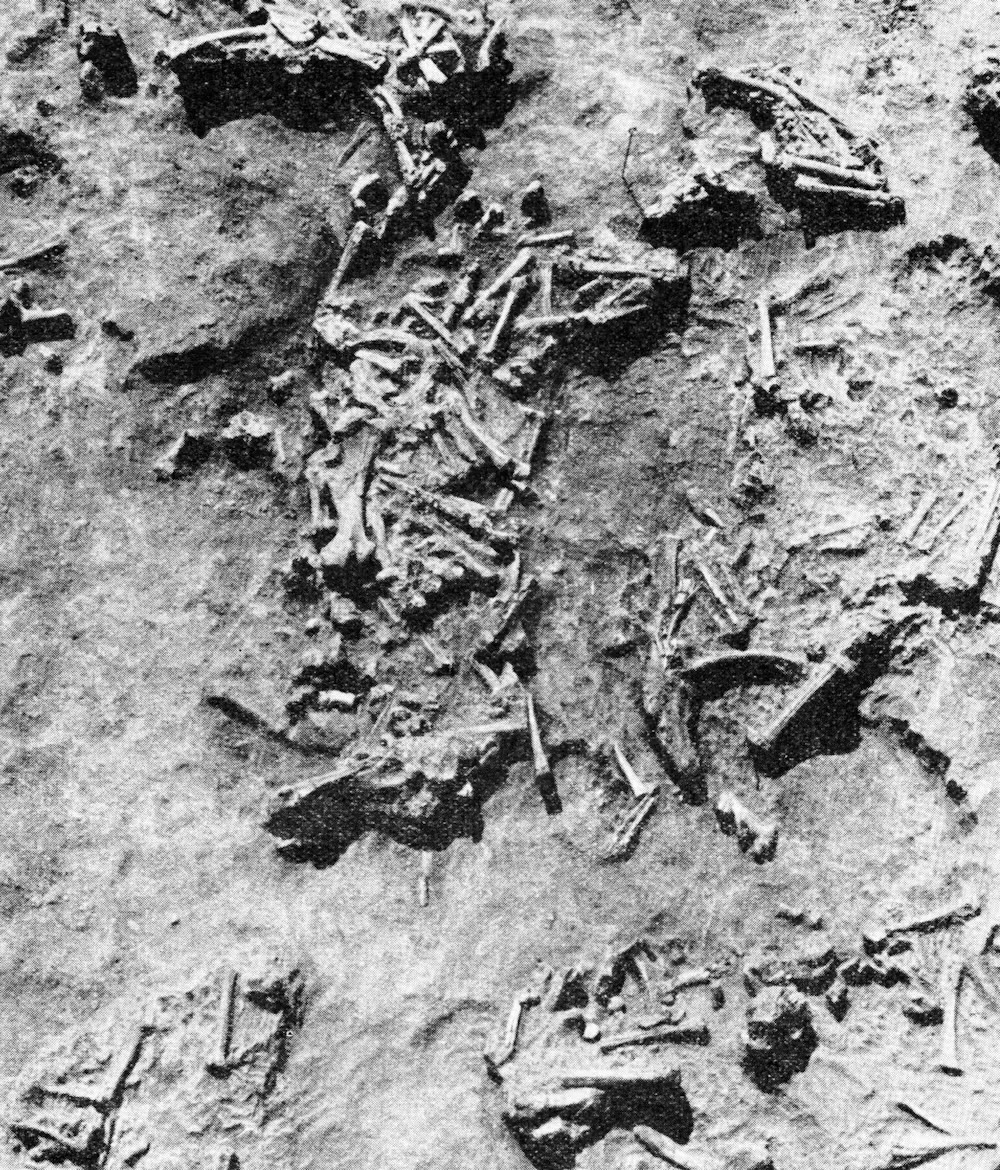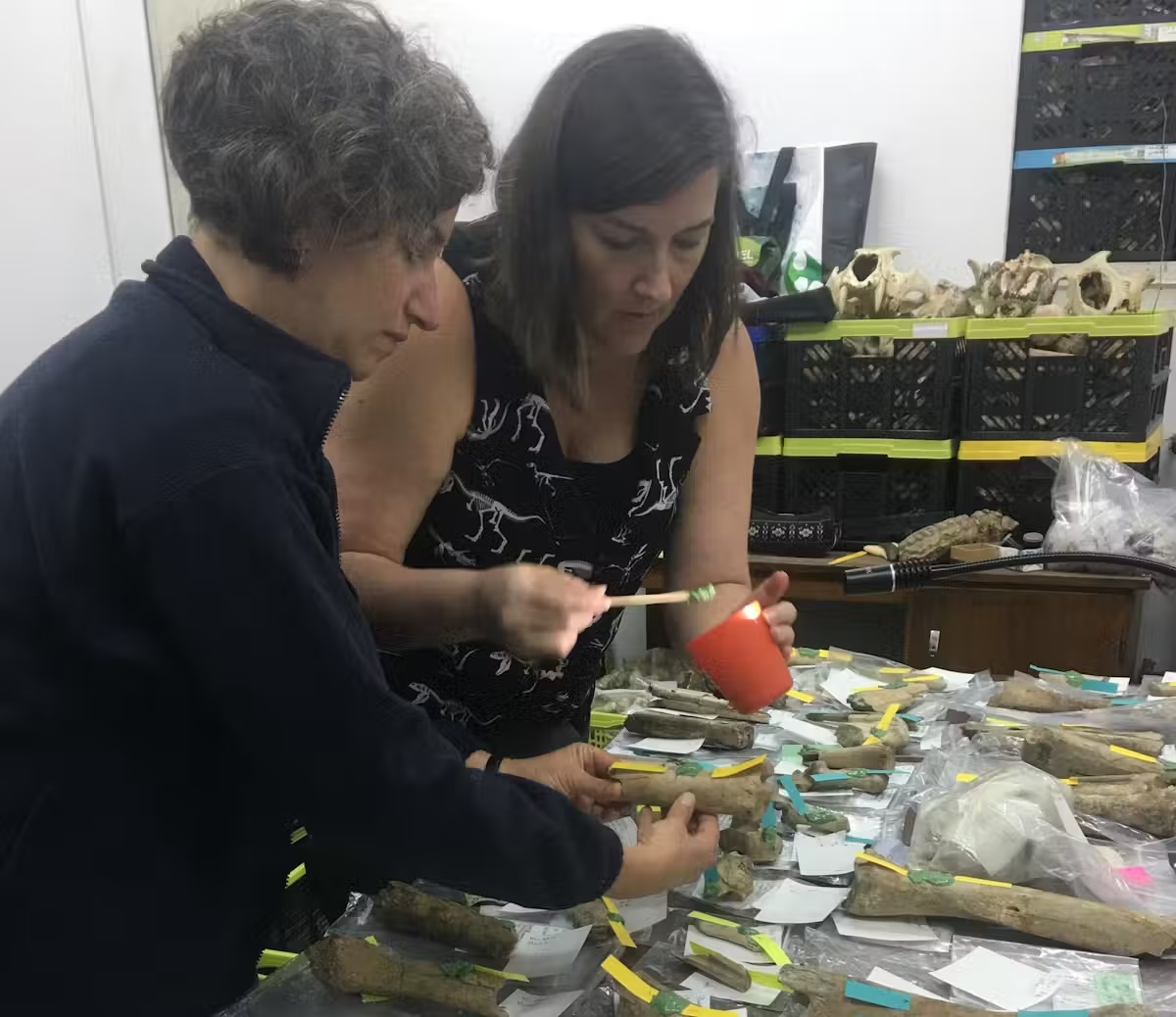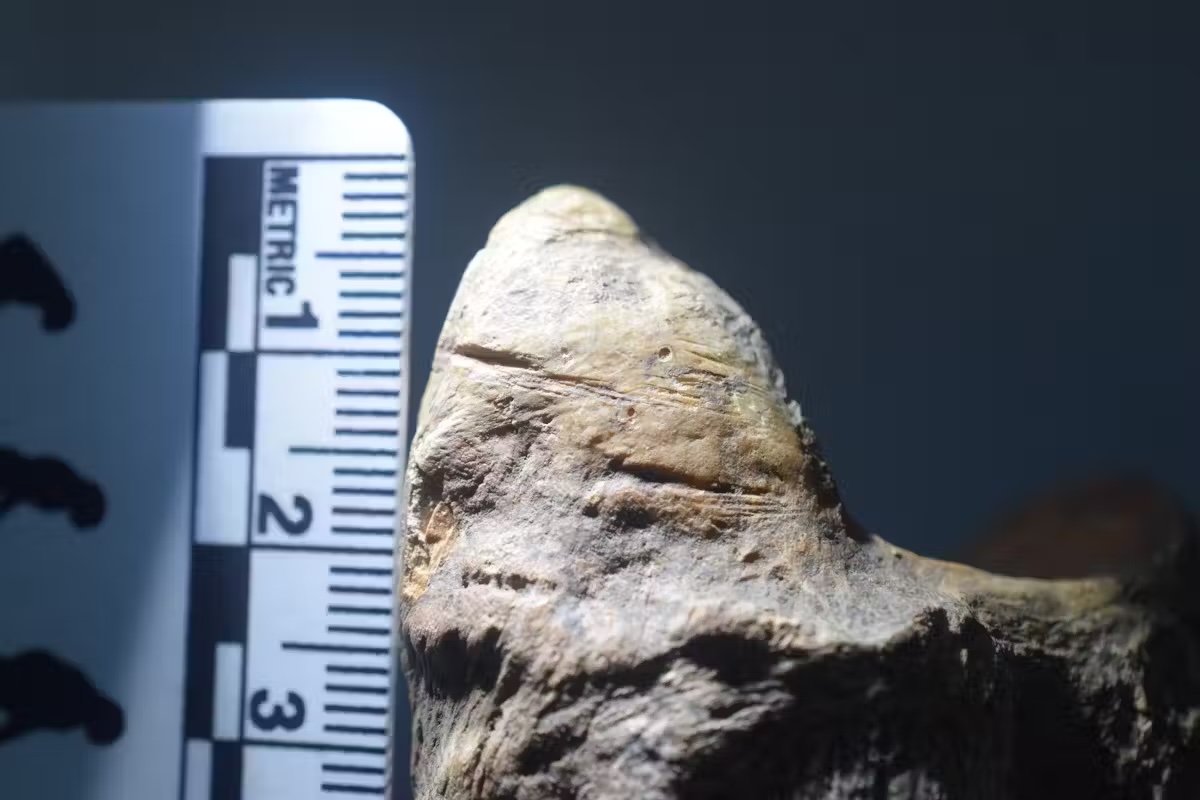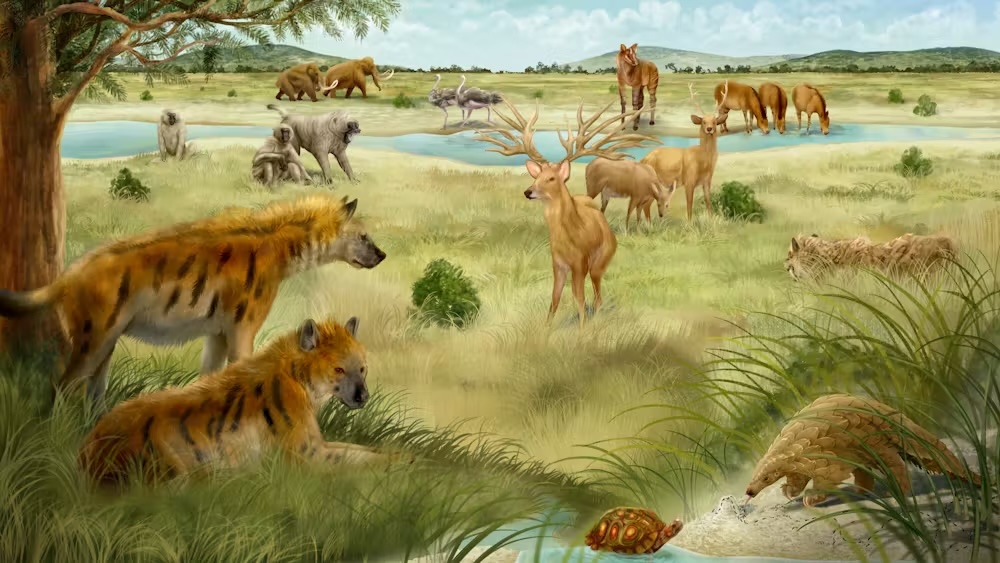
Looking again through the magnifying lens at the fossil’s surface, one of us, Sabrina Curran, took a deep breath. Illuminated by a strong light positioned nearly parallel to the surface of the bone, the V-shaped lines were clearly there on the fossil. There was no mistaking what they meant.
She’d seen them before, on bones that were butchered with stone tools about 1.8 million years ago, from a site called Dmanisi in Georgia. These were cut marks made by a human ancestor wielding a stone tool. After staring at them for what felt like an eternity − but was probably only a few seconds − she turned to our colleagues and said, “Hey … I think I found something.”
What she’d spotted in 2017 was our team’s first evidence that hominins butchered several animals at the site of Grăunceanu, in Romania, at least 1.95 million years ago. Before this discovery, those other cut marks from Dmanisi were the oldest well-dated evidence in Eurasia of the presence of hominins − our direct human ancestors.
Other scientists have reported sites in Eurasia and northern Africa with either hominin fossils, stone tools or butchered animal bones from around this time. Our recently published research adds to this story with well-dated, verified evidence that hominins of some kind had spread to this part of the world by around 2 million years ago.
Related: 150,000-year-old stone tools reveal humans lived in tropical rainforests much earlier than thought
Romanian site with fossilized animal bones

A little background on Grăunceanu: This open-air site was originally excavated in the 1960s, and researchers found thousands of fossil animal bones there. It’s one of the best-known Early Pleistocene sites in East-Central Europe. Many of the fossil animal bones are quite complete and at the time of excavation lay together as they were positioned in life. The original deposition was called a “bone nest” because of how densely packed the bones were.
If you were to stand on the hillside surrounding Grăunceanu almost 2 million years ago, it would likely have seemed familiar: a river channel surrounded by a forest that fades into more open grasslands to the foothills. Occasionally that river floods its banks, inundating the valley with rich soils, providing nutrients for the plants that the resident animals feed on. All pretty familiar, until you look more closely at those animals: ostriches, pangolins, giraffes, saber-toothed cats and hyenas − in Europe!
It’s the fossil bones of these ancient animal inhabitants that were excavated at Grăunceanu. Unfortunately, most of the excavation records and provenance data for the site have been lost. Even without those, though, the Grăunceanu fossils are so remarkably preserved that they offer up a wealth of paleontological information.
A few years after finding those first cut marks, our team, including biological anthropologist Claire Terhune, zooarchaeologist Samantha Gogol, and paleoanthropologist Chris Robinson, spent several weeks carefully studying all 4,524 Grăunceanu fossils, looking for more marks.
We examined all surfaces of every fossil bone with a magnifying lens and low-angled light. Most of these fossils have root etching on them − sinuous, shallow, overlapping marks made by plant roots that grew nearby. But whenever we saw a linear mark that looked interesting, we took an impression of that mark with dental molding material.

Confirming they’re cut marks
We can’t go back in a time machine to watch when these marks were made. Yes, ancient human butchers wielding stone tools would leave marks on bone. But mammalian predators or crocodiles could also leave marks with their sharp teeth. Sediments in rivers could scratch any bones rolling around in the water. Large animals walking across the landscape could move and scrape bones with their steps.
So how can we be confident that they’re cut marks? That’s where our zooarchaeologist collaborators Michael Pante and Trevor Keevil came in.

Within the past decade, Pante developed a novel method for identifying the source of marks left on bones. The first step is capturing precise 3D measurements of the mark impressions using an advanced microscope called a noncontact 3D optical profiler.
Then they compare the 3D shape data from the ancient marks with a reference set of 898 marks on modern bones made by known processes, including stone tool butchery, carnivore feeding and sedimentary abrasion.
This new method adds to the more qualitative, descriptive criteria many researchers, including our team, use to make mark identifications. For instance, we consider things such as mark location: Is the mark near a muscle attachment site, where you might expect to find a cut mark if a hominin were removing meat from a bone?
Based on our analyses, we determined that 20 Grăunceanu fossils are marked by cuts, with eight displaying high-confidence cut marks. Most of those marks are on fossils of hoofed animals, including a few deer; one is a small carnivore leg bone. When we could identify the type of bone, the cut marks are always in anatomical locations consistent with cutting meat off bones.
Dating the site
While the fossil species present can give us a rough age estimate of the site, we used uranium-lead (U-Pb) dating to get more precise age information. This technique relies on the fact that naturally occurring uranium decays over long but well-known periods of time to eventually transform into lead. Geologists use the ratio of these two elements like a radiometric clock to determine how old something is.
When one of us, Virgil Drăgușin, asked geochemist Jon Woodhead to use U-Pb dating to estimate the age of the Grăunceanu fossils based on several small tooth fragments, he was reluctant. Teeth do not usually work well for this dating technique. But he agreed to a test run, and to his surprise the teeth he tried worked very well.
Together with his colleague John Hellstrom, they calculated a much more precise date for the site. We now know the Grăunceanu site is older than 1.95 million years.
All of this data together − the very well-calibrated and tightly clustered dates of the specimens plus at least 20 cut-marked bones verified both by qualitative and quantitative methods − provides very reliable evidence that hominins were indeed in Eurasia by at least 1.95 million years ago, even though there are no hominin fossils from Grăunceanu.

Sometimes when we look through our magnifying lenses, it almost feels like we can peer into the past. That’s impossible − but we can piece together lines of evidence to paint a clearer picture of what happened in the past at Grăunceanu.
Now, imagining the view 1.95 million years ago, we see scenes of deer cautiously drinking from the river, majestic mammoths in the distance, a herd of horses grazing, a saber-toothed cat stalking a large monkey, a bear teaching her cubs to hunt … and a small group of hominins butchering a deer.
This edited article is republished from The Conversation under a Creative Commons license. Read the original article.
